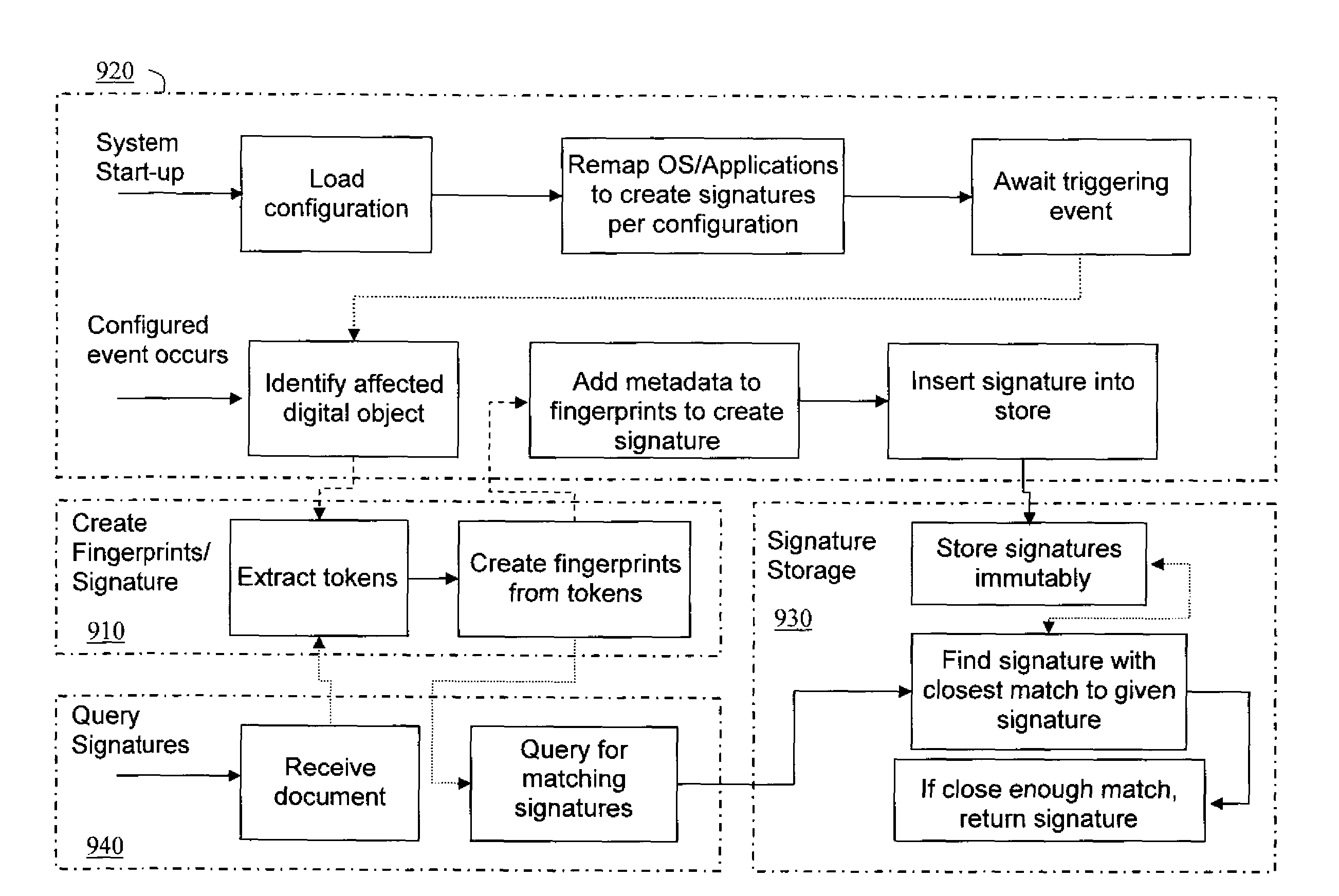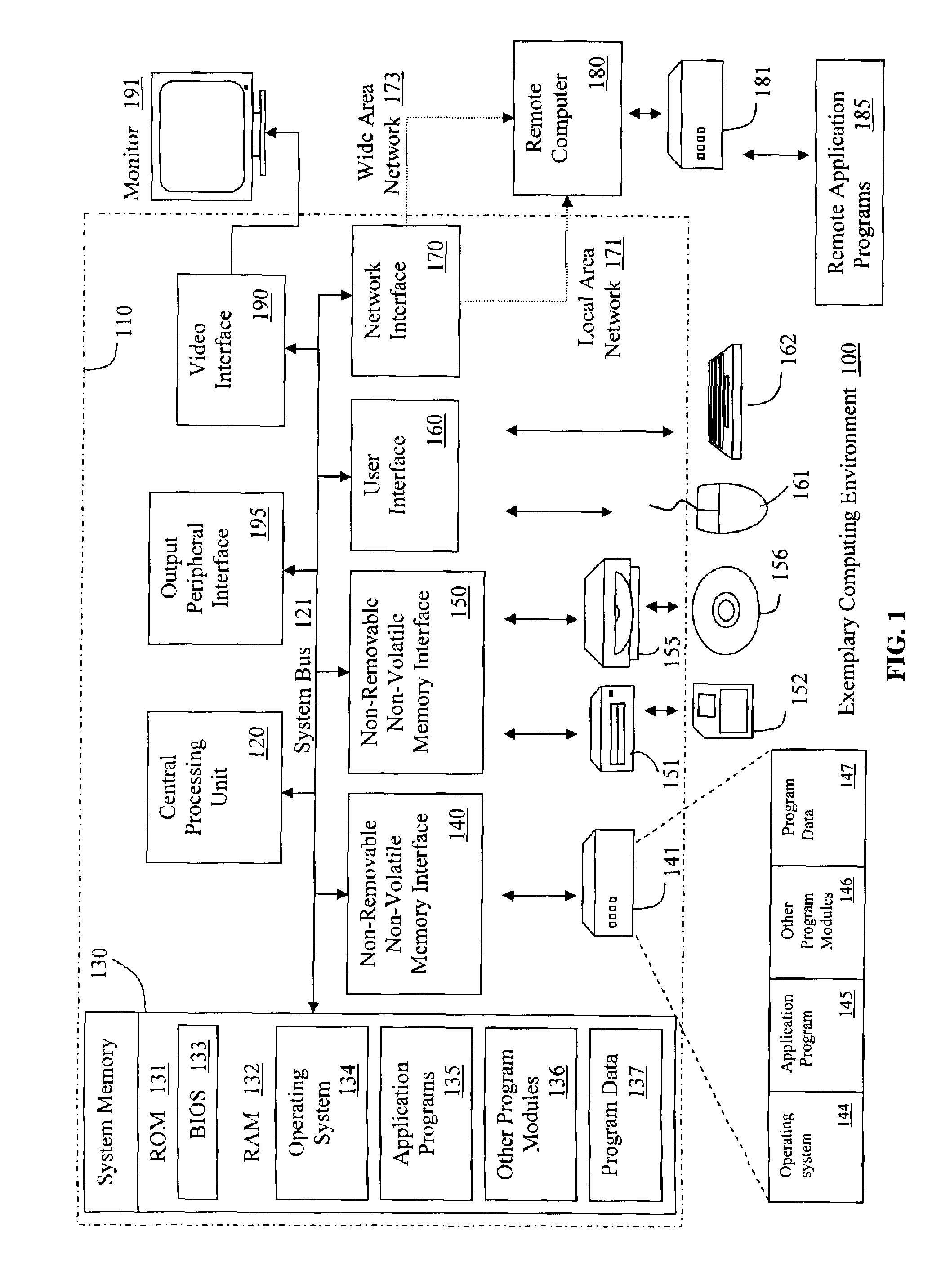Automated forensic document signatures
a document signature and automatic technology, applied in the field of digital data identification, can solve the problems of criminals exploiting the same technology to commit crimes, harming the safety, security and privacy of the society, and carries enormous potential both for advancement and for improvement, and achieves the effect of facilitating the method
- Summary
- Abstract
- Description
- Claims
- Application Information
AI Technical Summary
Benefits of technology
Problems solved by technology
Method used
Image
Examples
Embodiment Construction
Example Computing Environment
[0032]FIG. 1 and the following discussion are intended to provide a brief general description of a suitable computing environment in which an example embodiment of the invention may be implemented. It should be understood, however, that handheld, portable, and other computing devices of all kinds are contemplated for use in connection with the present invention. While a general purpose computer is described below, this is but one example. The present invention also may be operable on a thin client having network server interoperability and interaction. Thus, an example embodiment of the invention may be implemented in an environment of networked hosted services in which very little or minimal client resources are implicated, e.g., a networked environment in which the client device serves merely as a browser or interface to the World Wide Web.
[0033]Although not required, the invention can be implemented via an application programming interface (API), for ...
PUM
 Login to View More
Login to View More Abstract
Description
Claims
Application Information
 Login to View More
Login to View More - R&D
- Intellectual Property
- Life Sciences
- Materials
- Tech Scout
- Unparalleled Data Quality
- Higher Quality Content
- 60% Fewer Hallucinations
Browse by: Latest US Patents, China's latest patents, Technical Efficacy Thesaurus, Application Domain, Technology Topic, Popular Technical Reports.
© 2025 PatSnap. All rights reserved.Legal|Privacy policy|Modern Slavery Act Transparency Statement|Sitemap|About US| Contact US: help@patsnap.com



